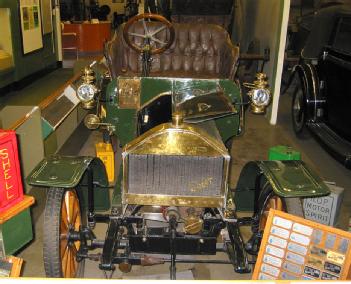
  |
Nottingham Industrial Museum |
NG8 2AE Nottingham, Great Britain (UK) (Nottinghamshire) |
|
| Address |
Wollaton Park and Hall
|
| Floor area | unfortunately not known yet |
Industry / Production Technology
- Passenger cars
- Steam engines/generators/pumps
- Mining
- Model Railway
- Motorcycles / Motorbikes
- Agricultural
- Steam engines-models
- Clocks and Watches
- Bicycles
- Textile production
- Carriages
- Craft
- Combustion engines/generators/pumps
- Radios (Broadcast receivers)
- Telephone / Telex
- Railway
- Printing technology
- Amateur Radio / Military & Industry Radio
|
Opening times
|
Thursday, Saturday, Sunday and some Bank Holidays: – 11:00 - 16:00. Last entry 15:30 | ||||
|
Status from 04/2024
|
Adults £4; Concessions £3; Accompanied children: free Special prices may apply for event days. |
||||
| Contact |
|
||||
| Homepage | nottinghamindustrialmuseum.org.uk | ||||
| Location / Directions |
Nottingham Industrial Museum is located in the 17th century stable block of Wollaton Hall, on the western edge of Nottingham, about 3 miles from the city centre. CyclingCycle paths link Wollaton Park with the centre of NottinghamPublic TransportNottingham is served by a mainline rail station.Two buses connect the city centre with Wollaton Park: No 30 (the Pink Line, stopping at the park gates on Wollaton Road) and No 35. The bus stops are a short walk from the station. From the Victoria area of Nottingham, the following buses will bring you to Wollaton: The Trent Barton Two from the bus station; get off at the Wheelhouse Pub and cross the road to the entry gate. The NCT 30 from John Lewis which will drop you off at the park exit gate. The NCT 36 & NCT 35 which take you to Wollaton Park Gates on Derby Road. From the Broadmarsh bus station, the Trent Barton i4 and the Your Bus Y5 both come to Wollaton and stop at Wollaton Park Gates on Derby Road. Finding the museumOnce in Wollaton Park follow signs for the Hall Shop and Restaurant. The museum sits in the same stable block – opposite the table tennis table and toilets. |
Some example model pages for sets you can see there:
| Description | Nottingham Industrial Museum, nestling in the grounds of Wollaton Hall and Deer Park, is one of Nottinghamshire’s best-kept secrets. Steam Hall The Steam Hall contains the impressive Basford Beam Engine. One of a pair of engines built in 1858 by R.W Hawthorn in Newcastle-upon-Tyne, it was installed at Basford Pumping Station to supply fresh water to the City of Nottingham. You can also see a pair of Fowler steam ploughing engines, a number of static steam and diesel engines, working steam models, a model railway and a working telephone exchange Transport The gallery includes a Brough Superior car, one of only four saloons made, alongside a Celer, believed to be the only example existing. Also on display are a number of Brough Superior motorbikes, including a number of non-production models and a significant collection of Raleigh cycles Textiles In this gallery, you will learn about the fascinating lives of the men, women and children who worked in the textile factories that made Nottingham the lace capital of the world. The gallery features some of the earliest and most important machinery of its type in the country, most of which was built in the Nottingham area. The collection includes three hand knitting frames for producing woollen goods Gin Yard Our outside space is dominated by a large wooden horse Gin Wheel which was used in a local colliery to bring coal to the surface. Surrounding the Yard are a series of workshops, including a working Blacksmith’s Forge, a coal truck on rails and a recently restored Living Van Communications This gallery includes a number of turret (or public) clocks, a collection of telephones and other telecommunications material (donated by Plessey Co., latterly Siemens), in addition to early printing machines and a series of wireless receivers. We even have a model spark transmitter which you can use to send Morse Code messages And not forgetting the wonderful heritage of Nottingham Industrial Museum itself. Since our inception at Wollaton Hall and Deer Park we have had a long and industrious history. Don’t forget on the last Sunday of every month, we hold a steaming day when you can come and see our working exhibits in action. |
[dsp_museum_detail.cfm]
| Data Compliance | More Information |
 nottinghamindustrialmuseum.org.uk
nottinghamindustrialmuseum.org.uk 












